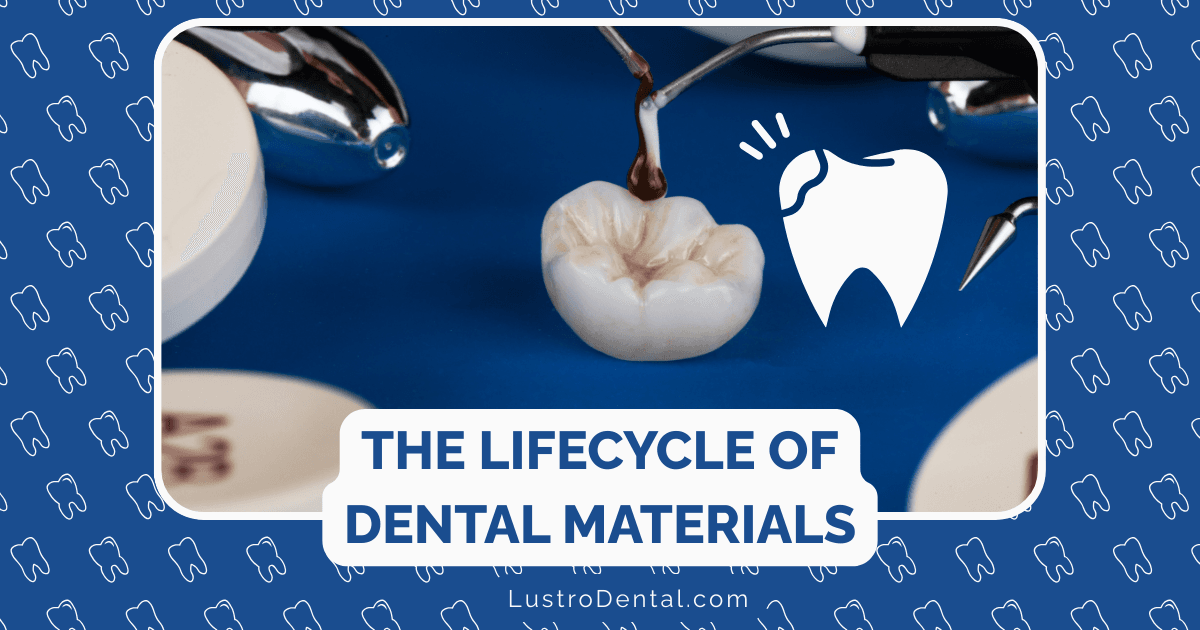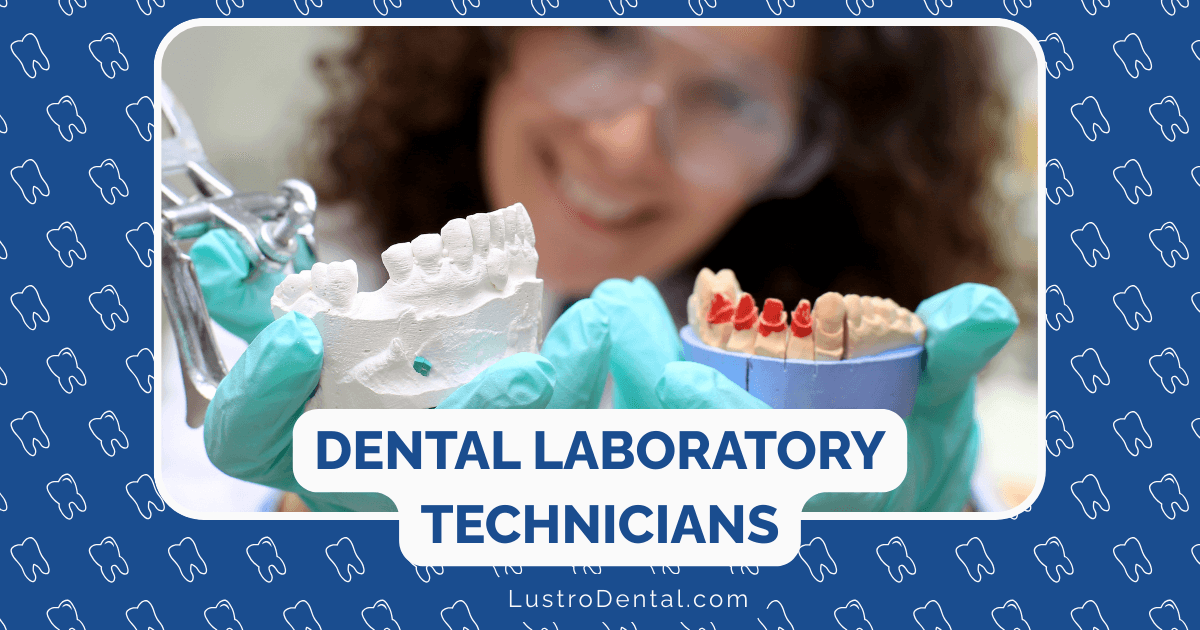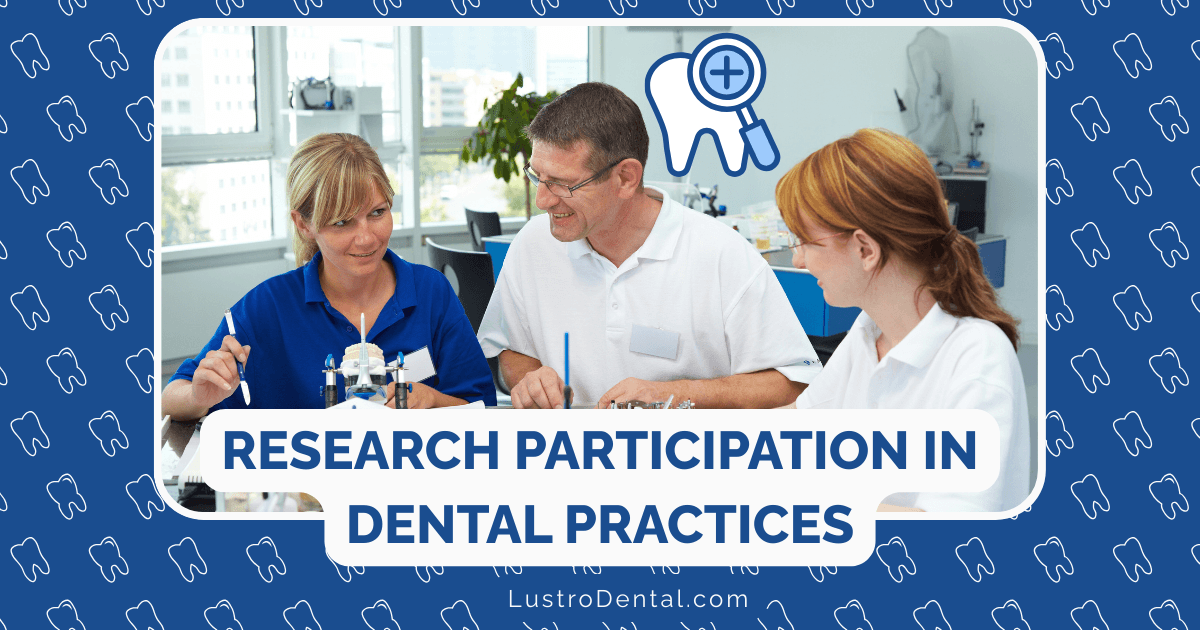The Lifecycle of Dental Materials: Environmental Impact Considerations

When you sit in the dental chair for a filling, crown, or other restoration, you’re likely focused on the immediate concerns: Will it hurt? How long will it last? What will it cost? Few patients—or even dental professionals—consider the broader environmental implications of the materials being used.
Yet the lifecycle of dental materials—from raw material extraction to manufacturing, clinical use, and eventual disposal—has significant environmental consequences that deserve attention in our increasingly sustainability-conscious world.
As the dental industry evolves, understanding these environmental impacts becomes crucial for making informed choices about dental care that consider both human health and ecological sustainability.
Understanding the Lifecycle of Dental Materials
Dental materials follow a complex journey before, during, and after their clinical use:
1. Raw Material Extraction
The journey begins with obtaining raw materials, which varies dramatically depending on the material:
- Metals (gold, silver, titanium): Typically mined, often through environmentally intensive processes
- Ceramics: Natural components extracted from quarries or synthesized in laboratories
- Polymers/Resins: Derived primarily from petrochemicals
- Glass-based materials: Manufactured from minerals like silica, often requiring high-energy processes
Dr. Sarah Chen, a researcher in sustainable dentistry, explains: “Many patients don’t realize that their dental crown or filling begins as raw materials extracted from the earth, often through processes that can significantly impact ecosystems, water quality, and local communities.”
2. Manufacturing and Processing
Once raw materials are obtained, they undergo various transformations:
- Energy consumption: Many dental materials require energy-intensive processing
- Chemical processing: Often involves solvents, catalysts, and other potentially harmful chemicals
- Waste generation: Manufacturing creates by-products that require proper management
- Transportation: Materials may travel globally before reaching dental practices
3. Clinical Use
The operational phase includes:
- Application: May involve additional materials (adhesives, cements)
- Durability: Longevity affects replacement frequency and overall environmental impact
- Biocompatibility: How materials interact with the human body
- Maintenance requirements: Some materials need more frequent replacement or repair
4. End-of-Life and Disposal
Eventually, all dental materials reach the end of their useful life:
- Removal: Often requires energy, water, and additional materials
- Waste classification: Many dental materials are classified as hazardous waste
- Disposal options: Landfill, incineration, recycling, or special processing
- Environmental persistence: Some materials remain in the environment for centuries
Environmental Impact Assessment of Common Dental Materials
Let’s examine the environmental footprint of the most commonly used dental materials:
Dental Amalgam
Despite declining use, amalgam remains common in many parts of the world.
Lifecycle Environmental Impacts
- Raw materials: Contains approximately 50% mercury, plus silver, tin, and copper
- Manufacturing: Relatively low energy requirements compared to alternatives
- Clinical performance: Highly durable, often lasting 15+ years
- Disposal concerns: Major environmental concern due to mercury content
According to a study published in the National Library of Medicine, an estimated 5,500 to 8,900 tons of mercury enter the atmosphere globally each year, with dental amalgam contributing to this burden. In Canada alone, approximately 4.4 metric tons of mercury are used annually in the dental sector.
Dr. Michael Roberts, an environmental dentistry expert, notes: “The Minamata Convention on Mercury has accelerated the global phase-down of dental amalgam due to environmental concerns, particularly mercury’s ability to bioaccumulate in aquatic ecosystems.”
Disposal Challenges
Mercury from dental amalgam can enter the environment through:
- Chair-side waste: Estimated 292.9 kg of mercury lost to dental clinic wastewater annually in Canada
- Removal of old fillings: Approximately 1.6 metric tons of mercury discharged into wastewater systems annually in Canada
- Cremation: In Canada, cremation accounts for approximately 91 kg of mercury emissions annually
Composite Resins
Tooth-colored composites have become increasingly popular alternatives to amalgam.
Lifecycle Environmental Impacts
- Raw materials: Primarily petroleum-based polymers and glass particles
- Manufacturing: Energy-intensive production processes, including high-temperature synthesis of glass fillers
- Clinical performance: Generally less durable than amalgam, with average lifespans of 5-10 years
- Disposal concerns: Non-biodegradable, persistent in the environment
A comparative life cycle assessment published in Science Direct found that resin-based composites (RBCs) actually had the highest Global Warming Potential among common dental materials, with a carbon footprint of approximately 14.75 kg CO2-equivalent per filling.
Chemical Concerns
Composite resins contain chemicals of potential environmental concern:
- Bisphenol A derivatives: Found in many composite resins
- Volatile Organic Compounds (VOCs): Released during curing
- Microplastics: May be released during placement, polishing, or degradation
According to research from the National Library of Medicine, Environment and Climate Change Canada has concluded that BPA (used in some dental materials) may enter the environment in quantities that could harm biological diversity and human health.
Ceramics and Glass Ceramics
Ceramics are commonly used for crowns, veneers, and other restorations.
Lifecycle Environmental Impacts
- Raw materials: Natural minerals or synthetic components
- Manufacturing: Extremely energy-intensive, requiring high-temperature kilns
- Clinical performance: Excellent durability, often 15+ years
- Disposal concerns: Non-biodegradable but generally inert
Dr. Lisa Chen of Cosmetic Dentistry of San Antonio explains: “While ceramics are incredibly durable and biocompatible, their production requires significant energy. The extraction of natural ceramics can lead to habitat destruction, while synthetic ceramics demand substantial energy for production.”
Emerging Alternatives
Newer bioactive ceramics offer potential environmental advantages:
- Bioactive glass: Promotes dental tissue healing with lower environmental impact
- Bioceramic materials: May offer improved biocompatibility and reduced energy requirements
Metals in Dentistry
Metals are used in various dental applications, from crowns and bridges to implants.
Lifecycle Environmental Impacts
- Raw materials: Mining operations for gold, titanium, and other metals
- Manufacturing: Energy-intensive refining and processing
- Clinical performance: Excellent longevity, often 20+ years
- Disposal concerns: Potential for recycling, though often not implemented
The environmental impact of metals varies significantly:
- Gold: Intensive mining with significant land disruption and chemical use
- Titanium: Lower impact than gold but still requires significant energy for processing
- Stainless steel: More environmentally friendly option for some applications
Comparative Environmental Footprints
Research is beginning to quantify the relative environmental impacts of different dental materials:
Carbon Footprint Comparison
According to research published in ResearchGate, the carbon footprints of common dental restorations are:
- Dental amalgam: Approximately 14.8 kg CO2-equivalent per filling
- Composite resin: Approximately 14.75 kg CO2-equivalent per filling
- Glass ionomer cement: Approximately 8.6 kg CO2-equivalent per filling
Other Environmental Impact Categories
The same research assessed nine different environmental impact categories and found:
- Dental amalgam: Highest impact across most categories due to mercury
- Composite resin: Highest Global Warming Potential due to energy-intensive manufacturing
- Glass ionomer cement: Lowest environmental impact across most categories
Waste Management and Disposal Challenges
The end-of-life phase presents significant environmental challenges for dental materials:
Hazardous Waste Concerns
Many dental materials are classified as hazardous waste, requiring special handling:
- Amalgam: Contains mercury, requiring specialized collection and processing
- Lead foil: From traditional X-ray packets
- Chemical waste: Includes disinfectants, developers, and fixers
- Sharps: Needles and other sharp items that may be contaminated
According to MWaste, a medical waste management company, proper segregation of dental waste is crucial for reducing environmental impact and ensuring regulatory compliance.
Current Disposal Practices
The dental industry has implemented several measures to improve waste management:
Amalgam Separators
These devices capture mercury-containing particles from wastewater:
- Required by the EPA in the United States
- Can capture up to 99% of amalgam particles
- Collected amalgam can be recycled to recover mercury and other metals
Recycling Programs
Various dental materials can be recycled:
- Precious metals: Gold and other precious metals from crowns and bridges
- Scrap amalgam: From removed fillings
- Lead foil: From traditional X-ray packets
- Gypsum: From dental casts and models
Research published in the National Library of Medicine highlights that recycling one metric ton of gypsum (commonly used for dental models) can conserve 28 kWh of energy and 4 pounds of aluminum.
Emerging Sustainable Materials and Practices
The dental industry is responding to environmental concerns with innovative materials and approaches:
Bioactive Materials
These materials interact positively with the body and may offer environmental advantages:
- Bioactive glass: Promotes remineralization and has lower environmental impact
- Bioceramic materials: May require less energy to produce than traditional ceramics
- Glass ionomer cements: Lower environmental footprint than composites or amalgam
According to Complete Smiles, bioactive glass composites (BAG) use significantly less energy during production and help teeth remineralize, potentially reducing the need for retreatment.
Digital Dentistry
Digital technologies are reducing material use and waste:
- Digital impressions: Eliminate the need for impression materials
- CAD/CAM restorations: More efficient use of materials with less waste
- 3D printing: Can reduce material waste by up to 40% compared to traditional methods
Biodegradable Alternatives
Research is advancing on truly biodegradable dental materials:
- Natural polymers: Derived from renewable resources
- Biodegradable composites: Incorporating natural fibers or biodegradable polymers
- Plant-based alternatives: For temporary restorations and other applications
Strategies for Reducing Environmental Impact
Both dental professionals and patients can take steps to minimize the environmental footprint of dental care:
For Dental Practices
- Implement comprehensive waste management systems:
- Proper segregation of waste streams
- Use of amalgam separators
- Recycling programs for eligible materials
- Choose materials wisely:
- Consider environmental impact alongside clinical factors
- Opt for more sustainable alternatives when clinically appropriate
- Select materials with longer clinical lifespans to reduce replacement frequency
- Adopt digital technologies:
- Digital radiography to eliminate chemical processing
- Digital impressions to reduce material waste
- CAD/CAM technologies for more efficient material use
- Reduce energy and water consumption:
- Energy-efficient equipment and lighting
- Water-saving devices and practices
- Consider renewable energy sources
For Patients
- Prioritize prevention:
- Good oral hygiene reduces the need for restorative materials
- Regular check-ups can catch issues early, requiring less extensive treatment
- Ask questions about materials:
- Inquire about the environmental impact of proposed treatments
- Discuss material options with your dentist
- Maintain restorations properly:
- Follow care instructions to maximize longevity
- Address issues promptly to avoid more extensive treatments
- Choose environmentally conscious dental practices:
- Look for practices that prioritize sustainability
- Support dentists who implement green initiatives
The Future of Sustainable Dental Materials
The field of sustainable dentistry continues to evolve:
Research Directions
Scientists are exploring several promising avenues:
- Biomimetic materials: Designed to mimic natural tooth structure
- Self-healing materials: Can repair minor damage without intervention
- Remineralizing agents: Promote natural healing of early decay
- Biodegradable polymers: Derived from renewable resources
Industry Shifts
The dental industry is increasingly prioritizing sustainability:
- Manufacturer responsibility: Extended producer responsibility programs
- Green certification: Programs to recognize sustainable dental practices
- Regulatory changes: Phasing out materials with significant environmental concerns
Dr. Roberts observes: “We’re seeing a fundamental shift in how the dental industry approaches material development. Environmental impact is no longer an afterthought but is increasingly being considered alongside clinical performance and cost.”
Balancing Clinical Needs and Environmental Considerations
While environmental impact is important, it must be balanced with clinical considerations:
Clinical Factors
- Durability: Longer-lasting materials may have a lower lifetime environmental impact despite higher initial footprint
- Biocompatibility: Patient health and safety remain paramount
- Functional requirements: Different clinical situations require different material properties
Economic Considerations
- Cost barriers: More sustainable options may be more expensive
- Insurance coverage: May not cover alternative materials
- Long-term savings: Durable materials may save money and resources over time
Conclusion: Toward More Sustainable Dental Care
The environmental impact of dental materials is a complex issue that deserves greater attention from dental professionals, patients, researchers, and policymakers. By understanding the lifecycle of these materials—from extraction to disposal—we can make more informed choices that balance clinical needs with environmental responsibility.
As Dr. Sarah Chen concludes: “Every dental restoration has an environmental story. By becoming aware of these stories and choosing materials and practices that minimize negative impacts, we can contribute to a more sustainable future for dentistry and for our planet.”
The journey toward truly sustainable dental materials is ongoing, but with continued research, innovation, and awareness, the dental industry can reduce its environmental footprint while maintaining excellent patient care.
What considerations do you make when choosing dental materials? Have you discussed environmental impacts with your dentist? Share your thoughts in the comments below.







